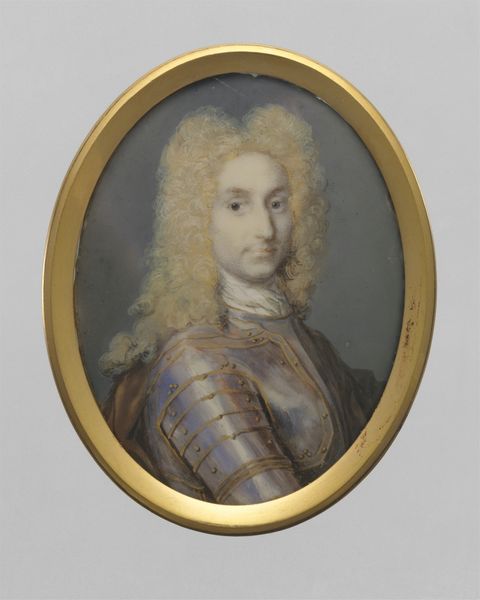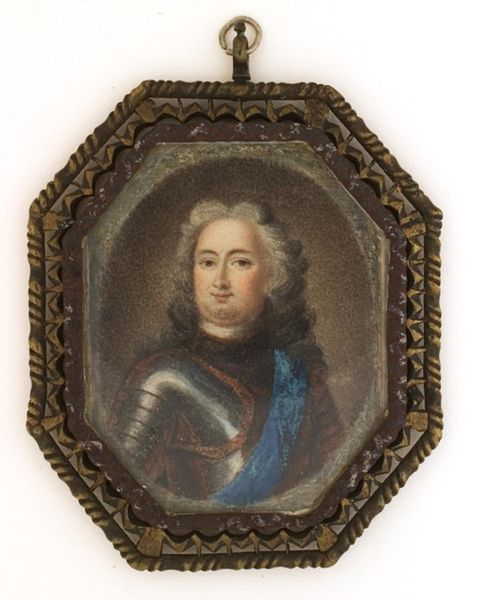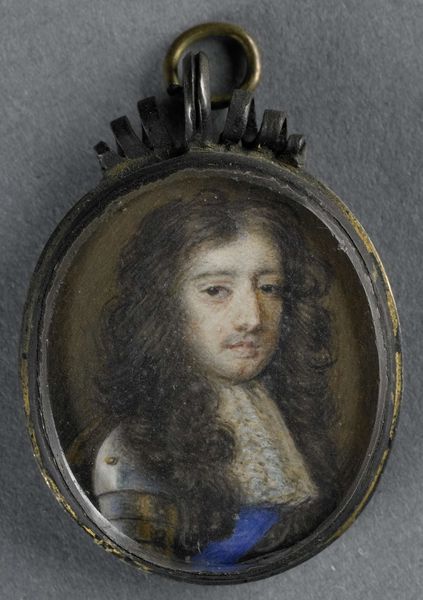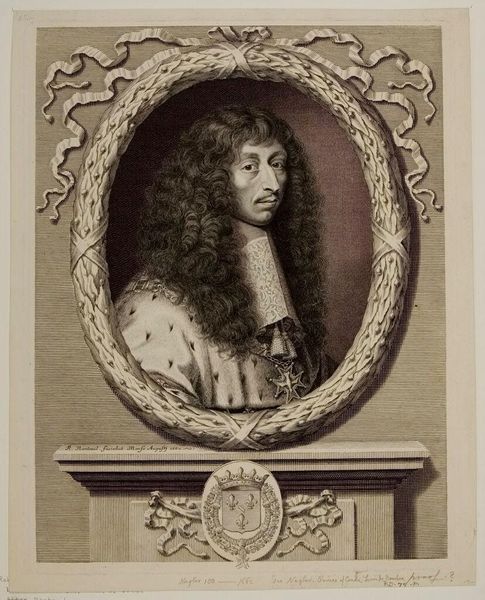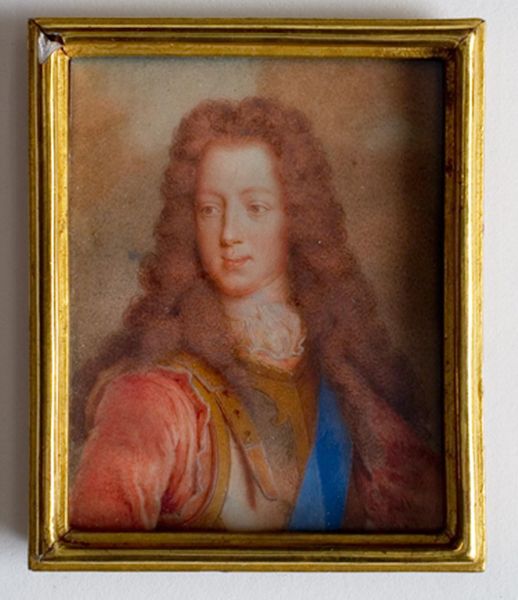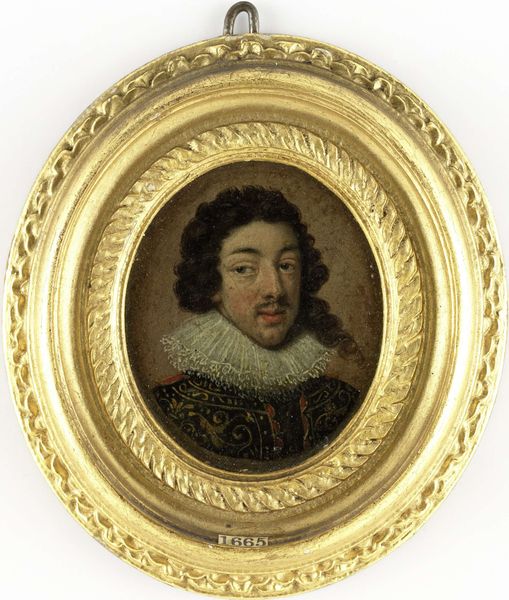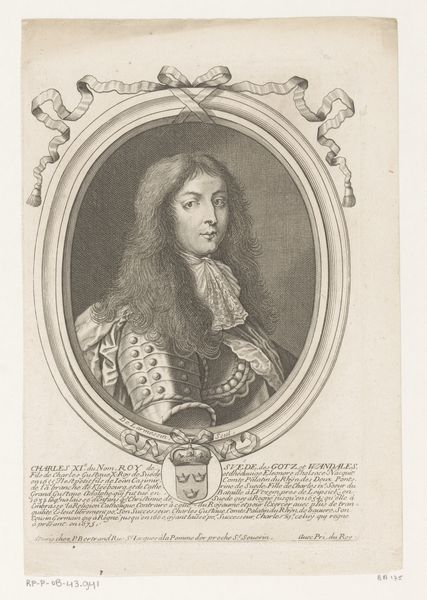
Portrait of William III, Prince of Orange and King of England after 1689 c. 1695
0:00
0:00
anonymous
Rijksmuseum
painting, oil-paint
#
portrait
#
baroque
#
painting
#
oil-paint
#
sculpture
#
dark focal point
#
framed image
#
black object
#
history-painting
Dimensions: height 9 cm, width 7.2 cm, height 13.5 cm, width 10.5 cm, depth 1.6 cm
Copyright: Rijks Museum: Open Domain
This is a portrait of William III, Prince of Orange and King of England, made after 1689 by an anonymous artist. William is adorned in royal regalia, most notably the ermine-lined cape draped across his shoulders, a symbol of power and status. Consider how the motif of the royal cape has evolved. In ancient Rome, emperors wore purple togas, a color reserved for the ruling class. This visual language of power has been transmitted through the ages, from Byzantine emperors in their gold-embroidered cloaks to the Renaissance monarchs depicted in velvet robes. Each era imbues the symbol with its own cultural nuances, yet the underlying message remains: authority, legitimacy, and divine right. The enduring appeal of such symbols lies in their capacity to tap into our collective memory. The cape, in particular, triggers deep-seated psychological associations with leadership. It's a tangible representation of intangible qualities such as strength, responsibility, and protection. Note how the artist subtly conveys William's commanding presence. The non-linear progression of this symbol resurfaces, evolves, and takes on new meanings.
Comments
No comments
Be the first to comment and join the conversation on the ultimate creative platform.
